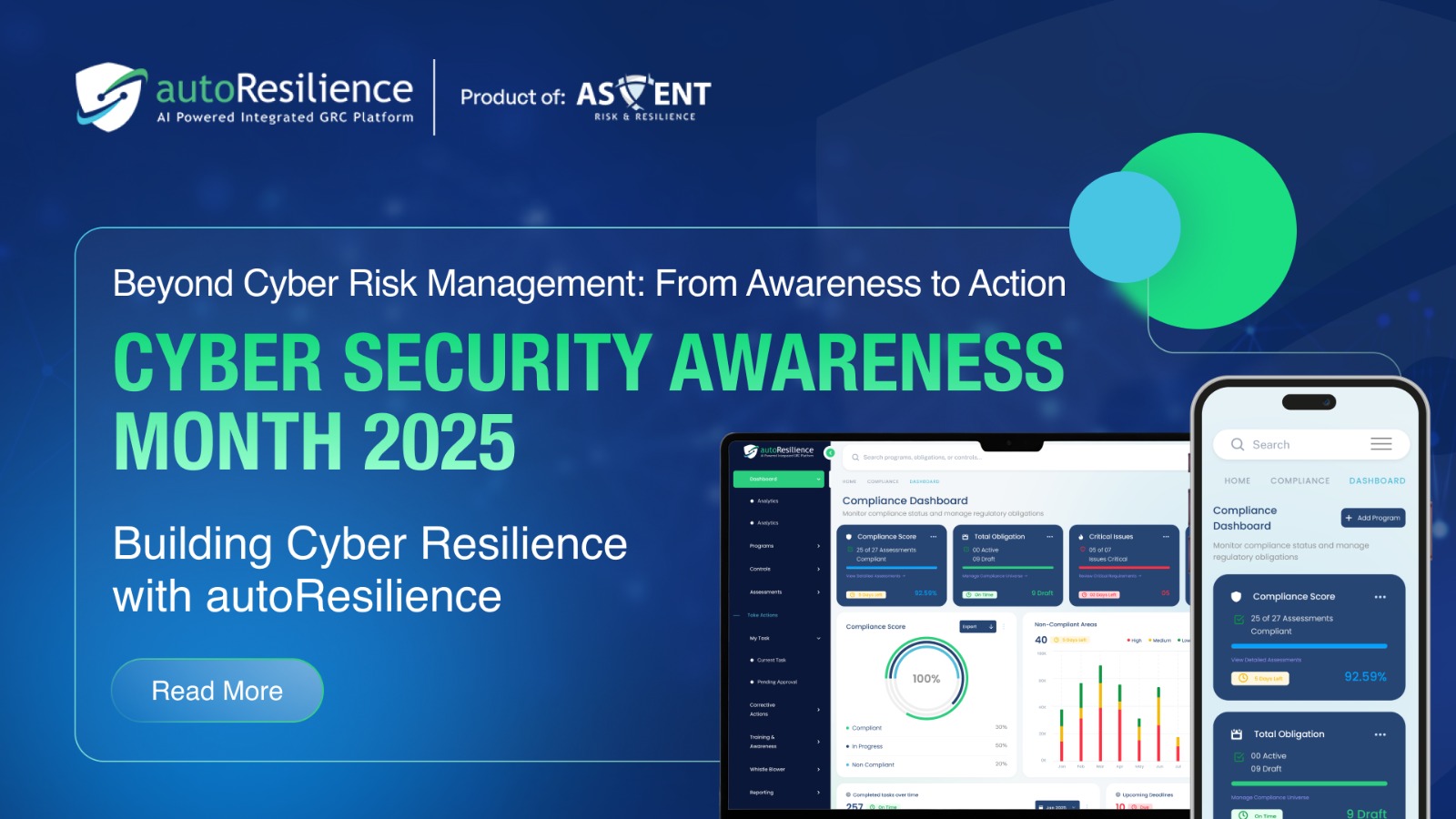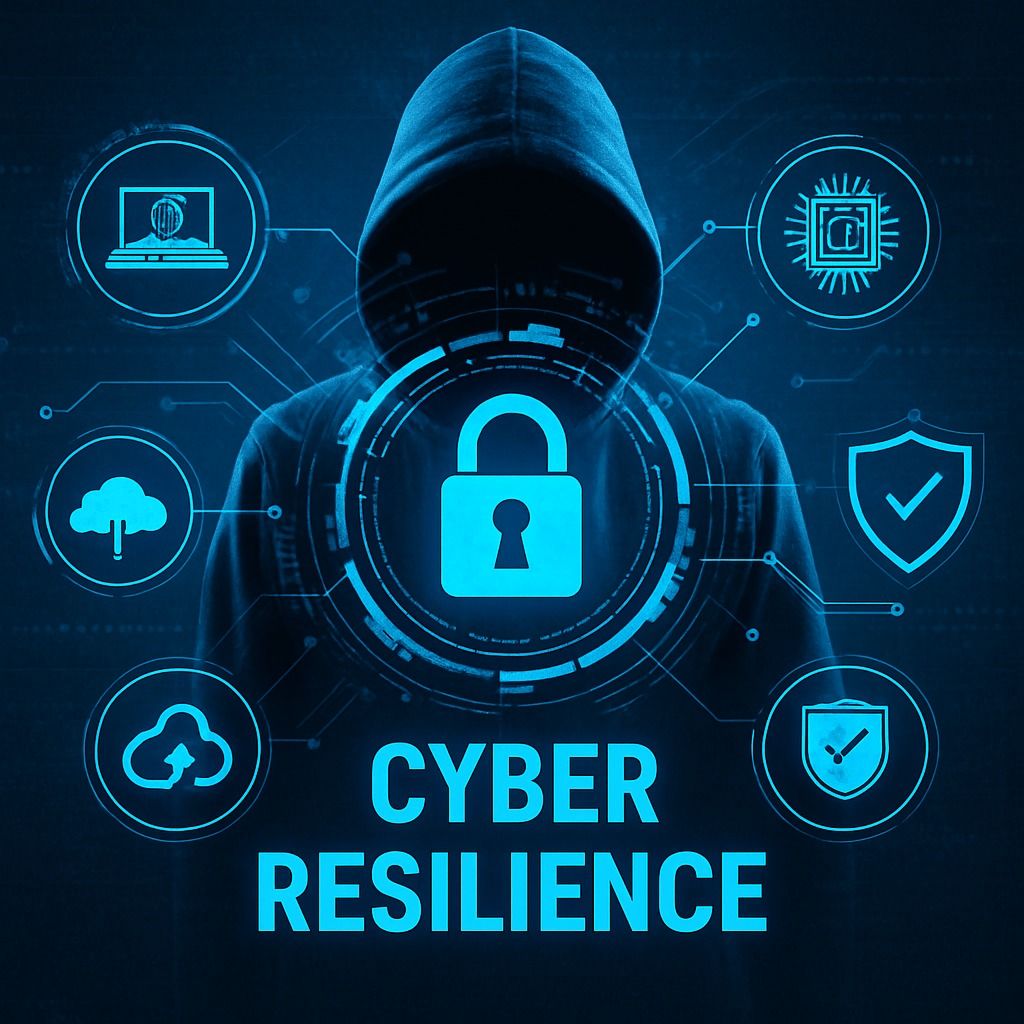
Beyond Cyber Risk Management: From Awareness to Action
Every year, enterprises reiterate their pledge to cybersecurity awareness by looking back at training programs, reviewing access controls, and updating their compliance milestones in the mo...

Every year, enterprises reiterate their pledge to cybersecurity awareness by looking back at training programs, reviewing access controls, and updating their compliance milestones in the mo...
Every year, enterprises reiterate their pledge to cybersecurity awareness by looking back at training programs, reviewing access controls, and updating their compliance milestones in the month of October. As a pivotal step towards Cyber Risk Management, October is celebrated as the Cyber Security Awareness Month. This year’s theme is about highlighting the need to strengthen the infrastructure against cyber threats, ensuring resilience and security.
As we approach the end of Cyber Security Awareness Month, it is important to understand that awareness is not sufficient. Cyber security threats have been a compliance headache. Since the beginning, we’ve been preparing against cyberattacks. But, in a dynamic era like this, where cyber threats are never on vacation, cyber resilience becomes the buzz word. Now success depends not only on prevention, but withstanding, adapting and recovering from attacks.
As per IBM, achieving true resilience demands the coming together of cybersecurity within a vast Governance, Risk Management, and Compliance (GRC) framework. This path transcends mere compliance, encouraging a continual assessment of risks and vulnerabilities.
Cyber resilience brings business continuity, cyber security and enterprise level resilience together. It is about the ability to continue delivering desired outcomes despite cyber-attacks, natural disasters or economic slumps. A measured level of information security proficiency and resilience affects how well an organization can continue business operations with little to no downtime.
With rising digital interconnectivity and complex third-party ecosystems, no organization is immune to cyber threats. Cyber resilience ensures that your enterprise can withstand attacks, maintain essential functions, and recover quickly, reducing downtime and financial loss.
According to PwC’s 2025 Global Digital Trust Insights, more than 33% of world leaders indicate that most of their serious data breaches within the last three years cost them no less than USD 1 million.
Cyber security has always been about building walls, creating boundaries and most importantly playing in defense. It has always been a reactive approach but when we move towards a new era, we also shift our strategy to a proactive one. Cyber resilience forms the backbone of organizations in such trying times.
This new approach of AI powered Cyber Security Risk Management Software should not be treated just as a protection or prevention base. It has to be considered a non-negotiable since it increases customer trust and infrastructure uptime. This is particularly important in a cloud native, digital first ecosystem where interdependency is vast and risks millions.
Artificial Intelligence (AI) is not an invincible sword. It has to be monitored with an infrastructure of leadership and culture of resilience.

The majority of the organizations still mistake compliance for security. Passing an audit or seamlessly integrating with ISO 27001 doesn’t automatically make an organization cyber resilient. Compliance makes sure that you just meet the minimum expectations. On the other hand, governance assures that you sustain trust and transparency which are the true foundations of resilience.
When cyber risks are evolving faster than a bullet, then governance needs to step up. It becomes the steering wheel that navigates your enterprise through inevitable threats.
Governance in cyber security management software is about prioritizing risks, taking informed decisions, and making a resilient ecosystem. While regulations like SAMA, NIST, ISO 27001, and RERA define what to secure, governance explains how security walks hand in hand with organizational goals.
A resilient organization doesn’t just comply it builds trust through transparency. Governance ensures that policies are not static documents but living frameworks that evolve with threats and technology.
Thus, a strong governance makes cybersecurity a strategic enabler rather than a compliance burden. Without governance, compliance becomes a mere checkbox which is reactive, fragmented, and outdated.

A cyber resilience model doesn’t have to be rigid. It simply needs to ensure that:
When these elements converge, governance and resilience transform from paperwork into performance.
Cyber threats are not just technical challenges. They are strategic overall enterprise risks. Board members and executives must treat cyber resilience as a core governance responsibility.
When cyber risk is integrated into the corporate risk register, it becomes visible across functions, finance, operations, supply chain, and customer management. This visibility ensures accountability and facilitates cross-functional collaboration.
Regulatory authorities around the world, including the Central Bank of the UAE, NIST, and ISO have started linking operational resilience with governance accountability. This means organizations must demonstrate governance ownership, not just compliance.
Leaders who proactively invest in cyber resilience are better positioned to mitigate losses, maintain investor confidence, and meet stringent audit expectations.
Traditional cyber risk operations were in silos. They only focus on compliance or technology. However, the reality of 2026 demands integration.
A connected GRC ecosystem helps organizations:
The autoResilience platform, for example, consolidates governance, risk, and cybersecurity management into a single digital framework. This reduces fragmentation, eliminates redundant reporting, and provides a real-time risk intelligence dashboard for leadership.
Through integration, cyber risk management evolves from a reactive checklist to a predictive enterprise discipline.
As we move beyond Cybersecurity Awareness Month, organizations should commit to long-term actions:
Therefore, true resilience does not lie in perfection but in preparedness. The ability to withstand shocks, adapt intelligently, and emerge stronger every time form true resilience.
Our Cyber Risk Management Software creates a roadmap for bringing back critical IT systems after a breakdown or cyber attack. It includes testing, training, security measures, and prioritization of vulnerable systems for operational resilience. The organization’s technology infrastructure and systems may face cyberattacks, hardware failures, and software vulnerabilities but our software will help in restoring and recovering the system with minimal downtime.
In today’s unpredictable digital landscape, awareness isn’t enough. Action and adaptability are what define success.
Ascent’s autoResilience platform strengthens organizations to go beyond traditional cybersecurity by embedding intelligence, automation, and governance into every layer of operations.
With autoResilience, you can:
Transform awareness into action and make cyber resilience your organization’s competitive advantage.
Explore autoResilience today and redefine your digital future.
Shambhavi Singh is a Marketing Executive at Ascent Risk & Resilience, where she contributes to brand communication, content strategy, and digital storytelling across the organization’s risk and resilience solutions. With a background spanning content writing, voice-over artistry, anchoring, public speaking, and social impact, she brings both creativity and clarity to every message she crafts. Shambhavi’s passion for communication started early in her hometown of Varanasi, where her curiosity for culture and heritage shaped her worldview. A natural storyteller and confident speaker, she has built a strong presence as a social media writer and continues to use her voice to inform, inspire, and engage audiences. Driven by a blend of will and skill, she is committed to building meaningful connections, leading with empathy, and contributing to initiatives that create positive change. A social worker at heart and a marketer by profession, Shambhavi combines creativity, purpose, and leadership in everything she does.